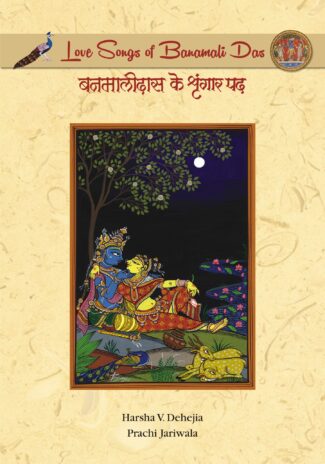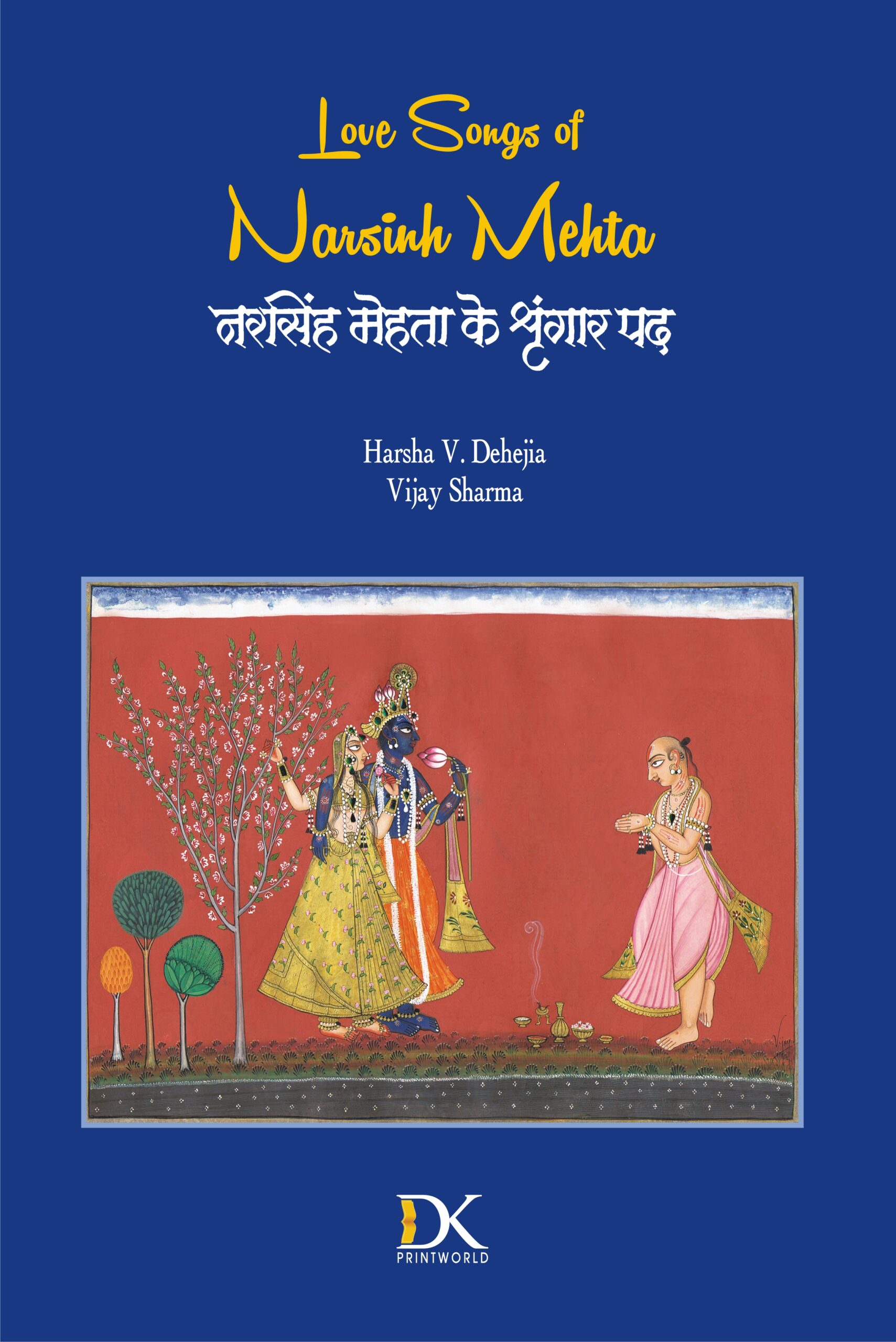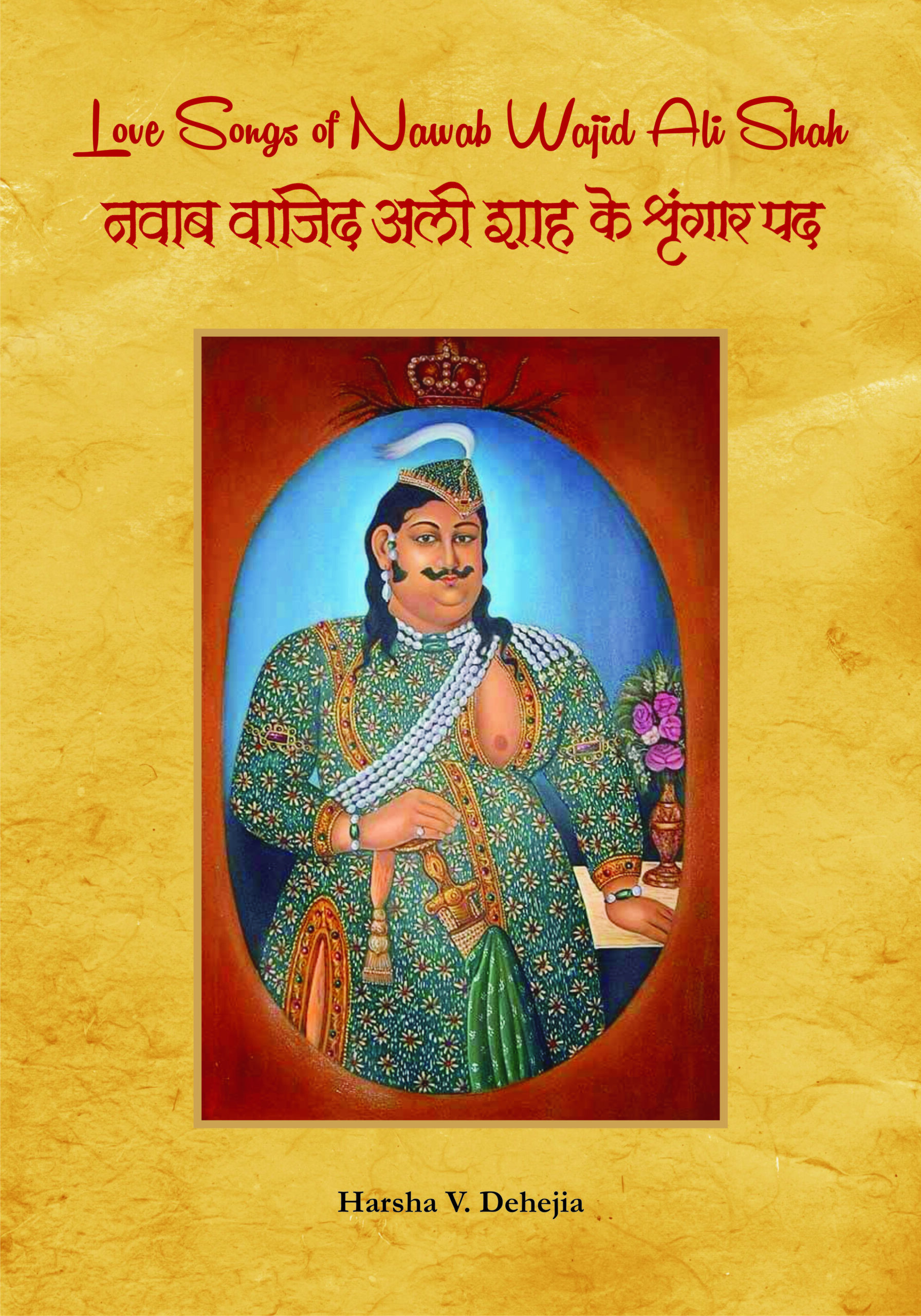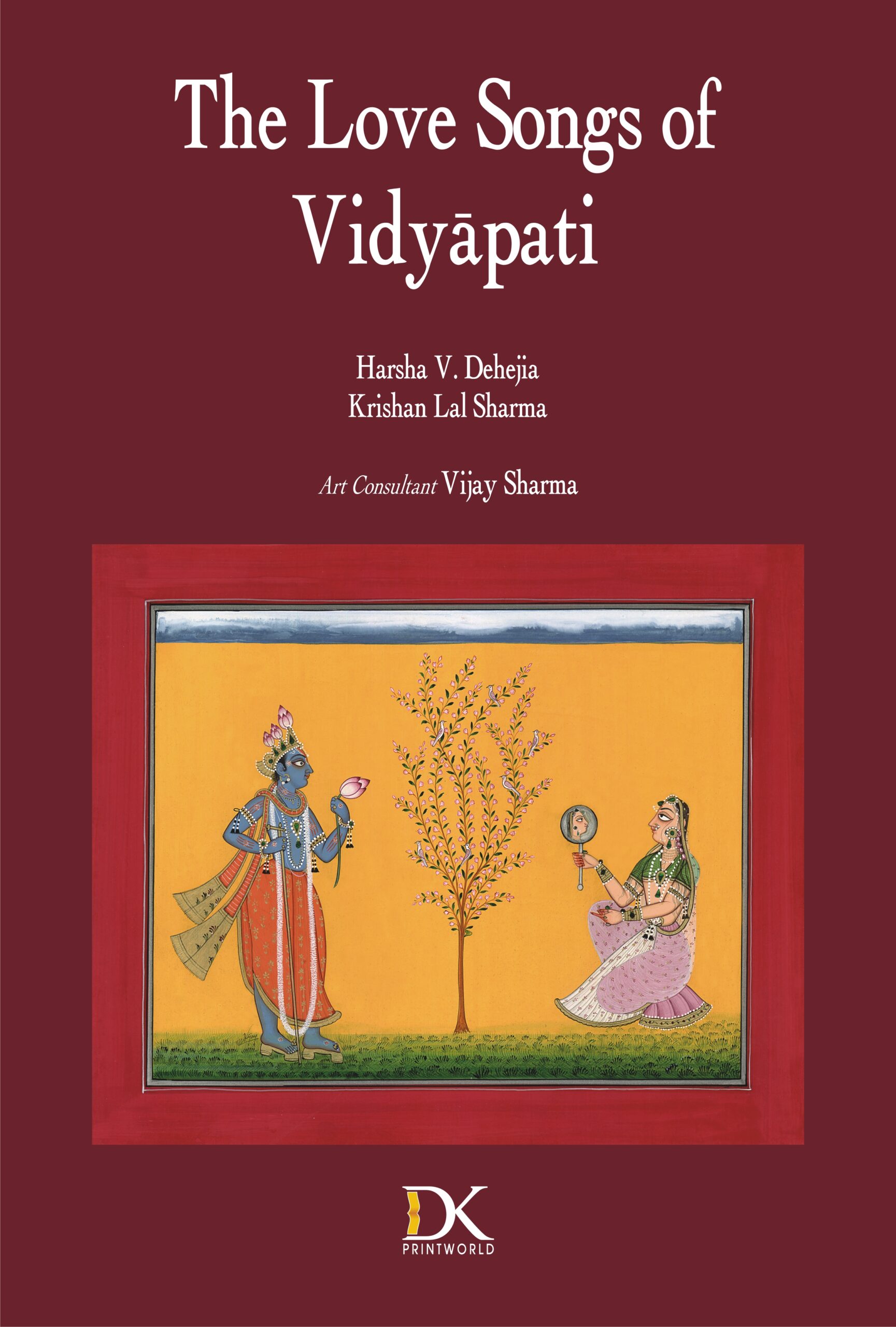Showing 61–70 of 156 results

This edition of Bhagavad Gita elaborates how each of its chapters and even verses leads to the next one, all in line with the overall scheme of thought. Acknowledging Gita as a yoga-sastra (science of dialectics), it explicates how this methodological device strings together all the seemingly contradictory statements; revealing an ineffably uniting experience, befitting a scientifically and practically conceived non-dualism or advaita.
The Bhagavad Gita, in this commentary is realized as a philosophical treatise of universal significance, having a bearing on the personal existence of each of us, as it is inseparably one with the existence of the whole. Taking cognizance of the overall development of the thought in the text, it enunciates the first half as a visualization of the oneness of the total system of existence and life with one Absolute Reality; with the second half insightfully proclaiming the unity of every individual, while maintaining ones characteristics, with the Cosmic Form, the concrete version of the Absolute or Bhagavan. It elaborates how each of its chapters and even verses leads to the next one, all in line with the overall scheme of thought. Acknowledging Gita as a yoga-shastra (science of dialectics), it explicates how this methodological device strings together all the seemingly contradictory statements; revealing an ineffably uniting experience, befitting a scientifically and practically conceived non-dualism or advaita. Though written as a sort of varttika to Nataraja Gurus famous commentary on the Gita, this one is appreciable as an independent book, since it delves into the depth of each verse directly in the view of the core philosophical vision, the Gita intends to communicate.

The Lilavati, a vithi, is the magnum opus of Ramapanivada, a versatile poet of eighteenth century ce. It is the best of all available specimens of vithi literature in the history of Sanskrit drama. The plot of the Lilavati Vithi is based on the love story between Virapala, the king of Kuntala, and Lilavati, the daughter of the king of Karnata.
The Lilavati, a vithi, is the magnum opus of Ramapanivada, a versatile poet of eighteenth century ce, a resourceful and multitalented writer of almost all the genres of creative compositions, belonged to Kerala, India. The Lilavati is the best of all available specimens of vithi literature in the history of Sanskrit drama. The plot of the Lilavati Vithi is based on the love story between Virapala, the king of Kuntala, and Lilavati, the daughter of the king of Karnata.
The text of the present volume of Lilavati Vithi is carefully edited and presented with a Sanskrit commentary Praci in the light of Sanskrit dramaturgy as well as Indian rhetorics. The commentary Praci treats to critically evaluate various poetical aspects, like figures in speech and metres. The characteristics of vithi with the suitable examples from the Lilavati, the thirteen numbers of vithyangas, the type of amukha or prastavana are explored in the introduction. It also presents an account of the history of the literature of available and non-available vithi type in its introduction.
Present edition of Lilavati Vithi along with the Sanskrit commentary Praci and an extensive introduction in English and appendices will interest scholars and students of Indology who are focused on the study of Sanskrit literature. It will benefit the readers interested in classical Sanskrit literature. It will also be a supporting tool for the researchers of the history of classical Sanskrit literature in general and vithi literature in particular.

This volume, while discussing the poetic genius of Banamali, portrays the varied forms of pata paintings, associated with the painters of Puri. Though the Rasalila of Krishna and the gopis is their favourite, the topic of dashavatara is very common in pata painting, displaying a special liking for navagunjara painting.
The heart of Odishan arts lies in the villages of Odisha. The songs and dances, the wall paintings and patachitras, fabrics and textiles, all are rooted in the rural sensibility of Odisha. When its people sing the love songs of Krishna or paint his leelas and kridas, they recreate Vrindavana in their on village square. Krishna sharingara reflects and echoes in each leaf and flower, and song and dance of Odisha. It is more vibrant in the verses of the eighteenth century Banamali Das, who wrote a moving Krishna poetry. He celebrated the many leelas and kridas of Krishna and in doing so he experiences every hue and shade of Krishna shringara. He reminds one of the works of Jayadeva and Vidyapati, and enters the mind and heart of Radha more than any other poet. Grounded on the theology of Chaitanya, he bountifully uses words such as ujjala rasa, mohajana and ashta sakhi, firmly establishing him as part of the Gaudiya tradition.
This volume, while discussing the poetic genius of Banamali, portrays the varied forms of pata paintings, associated with the painters of Puri. Though the Rasalila of Krishna and the gopis is their favourite, the topic of dashavatara is very common in pata painting, displaying a special liking for navagunjara painting. It also contains a conversation with Sujata Mohapatra, an accomplished Odissi dancer, who dances to the compositions of Banamali Das.

Love Songs of Narsinh Mehta is a commentary on the love songs of Narsinh, adi-kavi of Gujarat. Narsinh sings the glory of Krishna in total devotion as if Krishna is sitting in front of him. For him, Krishna is divine and human, both at the same time. Being Krishnas love, he brings in all emotions and cues of devotional love to his poetry.
Love Songs of Narsinh Mehta is a commentary on Narsinh Mehtas love songs. Narsinh (1408-65), a Vaishnava bhakti poet of medieval India, is considered as the adi-kavi of Gujarat. He is also regarded as a shringara kavi, a poet of romance. The quintessence of his bhakti is prem and his prem has inherent bhakti, and therefore his poetry is regarded as shringara bhakti kavya. Essentially shringara is the romantic celebration of the other, and when Narsinh’s other is none other than Krishna, his shringara kavya becomes Krishna bhakti, where Krishna is both divine and human, at the same time. Singing for Krishna, Narsinh celebrates his swami through amorous verses and divine surrender like Jayadeva.
He sat in a temple and relentlessly sang for his Lord, living through absolute poverty. Nothing made him more jovial than singing the glory of his Krishna. The only man for Narsinh is Krishna, and for the latter Narsinh is a woman at heart. Narsinh, through his songs, brings in the cue of all romantic feelings and moments, recreates the idyllic Vrindavana in ones mind, and he returns that Vrindavana a Vaikuntha with the footfalls of his Krishna.
Through this commentary, the author Harsha V. Dehejia introduces one to the fullness of Narsinhs poems, thereby making one known to Narsinh in and out.

This impressively illustrated volume brings forth the evergreen spirit of a Muslim ruler of Awadh, Nawab Wajid Ali Shaw (1822-87), in composing love poetry taking a cue from the amorous Krishna leela and assimilating and practising the same in personal life. A trained Kathak dancer himself and a dedicated patron of poetry, painting and performing arts, Wajid Ali Shah immersed in the rasa of dance, music and drama, and got deeply indulged in the many an expression of shringar, while administering the political affairs of his state.
Recalling the different facets of Nawab Wajid Ali’s life, the book explores the state and fame of Lucknow, of his times, where the Nawab lived a life of refinement and pomp, and attracted the best talents in arts and crafts. It also portrays how were dance and music enjoying pride of place during his reign.
While presenting a penetrating account of Ali Shah’s poetry, the book revisits his musical scholarship, history of his times and presents his poems with English translation. It as well showcases the best paintings centring around his personal and cultural life, and guides one go through the religious and cultural harmony prevailed in Awadh where a lot of factors were at play effecting acculturation between the Hindus and the Muslims, popularly known as the Ganga-Jamuni tehzeeb.
This impressively illustrated volume brings forth the evergreen spirit of a Muslim ruler of Awadh, Nawab Wajid Ali Shaw (1822-87), in composing love poetry taking a cue from the amorous Krishna leela and assimilating and practising the same in personal life. A trained Kathak dancer himself and a dedicated patron of poetry, painting and performing arts, Wajid Ali Shah immersed in the rasa of dance, music and drama, and got deeply indulged in the many an expression of shringar, while administering the political affairs of his state.
Recalling the different facets of Nawab Wajid Ali’s life, the book explores the state and fame of Lucknow, of his times, where the Nawab lived a life of refinement and pomp, and attracted the best talents in arts and crafts. It also portrays how were dance and music enjoying pride of place during his reign.
While presenting a penetrating account of Ali Shah’s poetry, the book revisits his musical scholarship, history of his times and presents his poems with English translation. It as well showcases the best paintings centring around his personal and cultural life, and guides one go through the religious and cultural harmony prevailed in Awadh where a lot of factors were at play effecting acculturation between the Hindus and the Muslims, popularly known as the Ganga-Jamuni tehzeeb.

Love Songs of Rasakhan is one among the numerous works of medieval Muslim Vaishnava poets. His original name was Said Ibrahim. On seeing a picture of Shrinathji, Said Ibrahim instantly fell in love with Krishna. His love for Krishna made him yearn for a vision of Krishna.
Love Songs of Rasakhan is one among the numerous works of medieval Muslim Vaishnava poets. A sixteenth-century poet, Rasakhan was born in a Pathan Muslim family at Pihani in Uttar Pradesh. His original name was Said Ibrahim. On seeing a picture of Shrinathji, Said Ibrahim instantly fell in love with Krishna. His love for Krishna made him yearn for a vision of Krishna. He stayed with Krishna devotees in Braj, but could not get a vision of Krishna. He unsuccessfully tried his luck at the Gopalpura Shrinathji Temple and finally went to Govindkund and lay there three days without food and water. Pleased, Shrinathji gave him darshan and this made him to move on the Pushtimarg with the guidance of Gosain Vittalnath.
He spent his entire life in Brij composing songs of the many lilas of Radha and Krishna with the pen-name, Rasakhan. Touched by the sensuality of the love of Radha and Krishna, he produced many mellifluous and melodic songs, celebrating their love.
Other than his poetic genuis, this bilingual illustrated volume contains the stories of 252 Vaishnavas, articles on Rasakhan: A Poet and His Poetry; Medieval Muslim Vaishnava Poets; Rasakhan and the Fluidity of Identity; The Mind of Rasakhan; Muslim Vaishnavas of Bengal; and Poets, Painters & Patrons, being Krishnalal Sharma; Narmada Prasad Upadhyaya; Vidya Rao; Harsha V. Dehejia; Sumanta Banerji; and Harsha V. Dehejia as respective authors.

This portfolio, based on the ten Maithili love songs of Vidyapati, presents lovely paintings on the varied love moods of Radha: her sensuous charm, innocence, longing for Krishna, surrender to love, etc.
Vidyapati (c. 13521448), called second Jayadeva in his lifetime, is immersed, charged and inspired by the love of Radha and Krishna. He wrote emotionally-intensive love songs in Maithili, for the queens of Shiva Simha, his patron, and the common folk. Though drawn inspiration from Jayadeva, more than him, Vidyapati presents in his poetry a rare, tender and sensitive understanding of Radhas psyche. In his love songs Radha, not Krishna, is in the centre stage and through his nayika Vidyapati is reaching out to each and every woman in Mithila.
Vidyapati presents his songs from a womans heart, and describes his nayikas slowly awakening youth, her sensuous beauty, her coyish charm, her naïve innocence, her surrender to love and her anguish on being neglected. She is invariably sensual, spiritual, physical and emotional. Though she did not inspire painters of the time, she ruled the hearts of the people of Mithila. Vidyapatis love songs are written in honeyed words and are sung with mellifluous notes in homes, fields, chowks and havelis, across eastern India. And thus he still rules their heart.
This portfolio, based on the ten love songs of Vidyapati, presents lovely paintings on the varied love moods of Radha, the love queen. In doing so, different artists have displayed their dexterity in Jaipur, Caurapancashika, late Mughal, Manaku, Kishangarh, Jain, Kangra and Basohli styles.
The Madhuravijayam (Sanskrit: मधुराविजयम्), meaning “The Victory of Madurai”, is a fourteenth-century CE Sanskrit poem written by the poet Gangadevi. It is also named the Vīra Kamparaya Caritam by the poet. Gangadevi, also known as Gangambika, was a poetess in the Vijayanagara Empire during the fourteenth century and chronicled the story of the victory of her husband, Kumara Kampana, son of Bukka Raya I, over the Muslims in Madurai, in the form of a poem. The poem celebrates the victory of the Vijayanagara Empire’s crown prince, Kamparaya, over Madurai. In addition to battle scenes a wash with blood, gore and plenty of poetic fantasy, the poetess describes how her husband Kampa passes the time between wars with his multitude of beautiful wives.
This edition is prepared to highlight that it is composed by a woman and it is the first woman writing in Sanskrit recognized by scholars and comprises of the original Sanskrit text with a new English translation. It forms the 4th volume under the series: Women Writings in Sanskrit Literature. The historical value of this work is discussed along with the introduction of this work. The authoress, instead of drawing the subject matter from the well-known Puranas (as is usual with the generality of Sanskrit poets), has chosen the biography of her royal consort as fit subject to exhibit her remarkable poetical talents.
The work is in the form of a classical kavya conforming to the rules laid down in the treatises on poetics and contains the usual lengthy description of the seasons, the twilight, the rising of the moon and other necessary topics. The authoress writes in the Vaidarbhi style.

The book discusses the main concepts of management that are to be found in Sanskrit literature, and attempts to study the usefulness of those Indian traditional values and principles in the formulation and adoption of modern-day management techniques a very useful book for scholars and students.
India has been known for long as the land of spirituality. Recent studies have brought out the depth of secular wisdom that is also embedded in the ancient Vedic and classical literature. Management Mantras is an attempt to bring about a synthesis between a modern subject like Management and one of the most ancient literatures of the world. In the words of Swami Mukundanandaji who has written the foreword, This book is like a treasure house of centuries of wisdom from the ancient Indian civilization speaking to us on the theme of Management Science. Whether one is questing for tips to hone ones managerial acumen, or searching for gems of practical wisdom in life, or merely an admirer of the Vedic culture, there is enough material in it to satisfy everyone.
The book touches upon all aspects of Management like Decision Making, Human Resource Development, Organizational Behaviour and Social Responsibility in 12 chapters. The discussions in each chapter are logically organized setting forth the principles of management at the outset, followed by corresponding references from texts like Arthasastra.
It is hoped that the book will interest scholars and students of Management and will be a useful addition to Libraries in Management schools as well as Humanities and Language Departments of Colleges and Universities.
| There are no products |